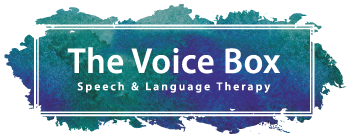In today’s fast-paced business world, clear communication is crucial for success. Whether you’re presenting a proposal, leading a team meeting, or engaging in a client conversation, speaking clearly is essential to ensure your message is understood and impactful.
We’ve compiled the top three tips for speaking with clarity to help you enhance your communication skills.
ARTICULATE YOUR WORDS
Clear pronunciation and enunciation are vital when aiming for clarity in your speech. Take your time to pronounce each word distinctly, avoiding rushed or slurred speech. Focus on articulating each and every syllable accurately, paying particular attention to the sounds at the end of each word.
When it comes to delivering clear and understandable speech, the movement of your mouth and lips plays a significant role. Let’s dive into why mouth opening and lip movement can make your speech louder and easier to understand.
Mouth opening allows for the proper projection of sound. When you open your mouth wider while speaking, it creates a larger resonating chamber, which helps amplify your voice. This increased space allows the sound waves produced by your vocal cords to travel more freely, resulting in a louder and more robust voice. By consciously opening your mouth wider, you provide a clearer and more audible sound for your audience, making it easier for them to hear and understand your message.
Additionally, lip movement contributes to the clarity of your speech. The movement of your lips helps shape and form different sounds, particularly consonants, which are crucial for intelligibility. Pronouncing consonant sounds involves precise coordination between your tongue, teeth, lips, hard and soft palate. By emphasizing these sounds through proper lip movement, you enhance the distinctiveness of your speech, making it easier for listeners to discern individual words and comprehend your message accurately.
Moreover, lip movement aids in visual communication and comprehension. Our brains are wired to not only process auditory information but also to rely on visual cues for better understanding. Observing the movement of someone’s lips while they speak can provide valuable visual information that assists in clarifying ambiguous sounds. When you consciously articulate your words and allow your lips to move naturally, you provide an additional layer of visual clarity that supports your spoken message.
In summary, mouth opening and lip movement contribute significantly to the loudness and clarity of your speech. Opening your mouth wider helps project your voice, making it louder and easier to hear. Meanwhile, proper lip movement aids in shaping sounds and enhances visual comprehension. By paying attention to these aspects, you can improve the overall intelligibility of your speech, ensuring that your message is conveyed clearly and effectively to your audience.
PACE YOUR SPEECH
Speaking too quickly can leave your audience struggling to follow your message. On the other hand, speaking too slowly can come across as monotonous and disengaging. Aim for a balanced and steady pace that allows your audience to absorb and process the information you’re conveying. The average pace of conversational speech ranges between 120 to 150 words per minute (wpm). However, it’s important to note that the ideal speaking rate can vary based on several factors, such as the language being spoken, cultural norms, and the context of the conversation. Some individuals naturally speak faster or slower than the average rate, influenced by their regional dialect, personal habits, or the urgency of the communication.
It’s worth mentioning that adjusting your speaking pace can be beneficial depending on the situation. For instance, when delivering a presentation or engaging in public speaking, a slightly slower pace, around 100 to 130 wpm, may be preferred to allow the audience to comprehend and process the information effectively. On the other hand, in casual conversations or informal settings, the pace may be faster, closer to the average conversational rate of 120 to 150 wpm.
Remember, the key is to find a speaking pace that ensures clarity, understanding, and engagement with your audience. Adapting your rate of speech to the specific context and the needs of your listeners will help you communicate more effectively and make a lasting impact.
Use pauses strategically to emphasize key points, provide clarity, or allow room for questions and feedback. Practicing your delivery and timing will help you find the ideal pace for effective communication.
SIMPLIFY AND STRUCTURE YOUR MESSAGE
Complex ideas can easily get lost in a sea of jargon and convoluted sentences. To ensure that you come across clearly, simplify your message by breaking it down into three concise and easily digestible parts. Structure your thoughts logically, using clear and straightforward language. By presenting your ideas in a structured manner, you will enable your audience to follow along with very little effort.
Speaking with clarity is a vital skill for effective communication in the corporate world. By articulating your words, pacing your speech, and simplifying your message, you can significantly enhance your ability to convey ideas with clarity and impact. Remember, practice makes perfect, so seize every opportunity to refine your speaking skills. With time and dedication, you will become a confident and compelling communicator, ensuring your message is understood and appreciated by all.
ADDITIONAL RESOURCES
For more ideas on improving your speaking skills, we recommend exploring the article How to be Well-Spoken (With Tips for Improvement) by the Indeed editorial team. This comprehensive piece provides expert advice and practical exercises to help you become a better speaker.
You can find even more valuable tips and techniques in the YouTube video How to be More Articulate: 5 Tips, by Communication Coach Alexander Lyon. Watch this video to gain useful strategies for speaking clearly and confidently in any setting.
